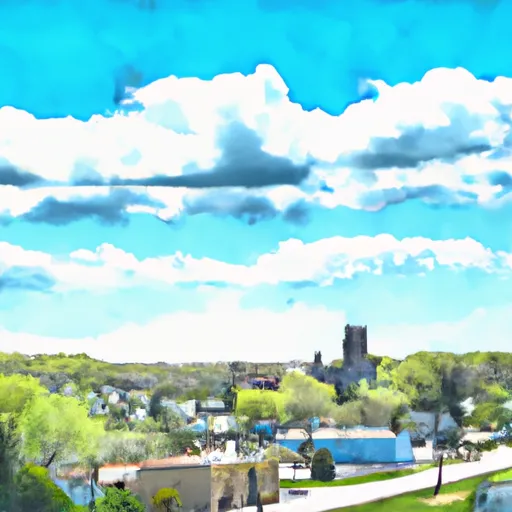°F
°F
mph
Windspeed
%
Humidity











Truesdale, Iowa is a small town situated in the western part of the state. It experiences a humid continental climate, characterized by hot summers and cold winters. Average temperatures range from the mid-20s°F (-4°C) in winter to the mid-80s°F (27°C) in summer. Precipitation is fairly evenly distributed throughout the year, with an annual average of around 30 inches (76 cm). Snowfall is common during winter months.
Truesdale benefits from its proximity to various hydrology constituents. The town is located near the Little Sioux River, which provides opportunities for fishing, boating, and canoeing. Additionally, there are several small lakes and ponds in the surrounding area where residents and visitors can enjoy water activities.
For outdoor recreation, Truesdale boasts beautiful parks and green spaces. The town has a well-maintained park with walking trails, playgrounds, and picnic areas, making it a perfect spot for families. Camping and hiking enthusiasts can explore the nearby parks and wildlife areas, such as the Remsen Wildlife Area and the Willow Creek State Park.
In conclusion, Truesdale, Iowa offers a comfortable climate, access to water resources, and ample opportunities for outdoor recreation, making it an appealing destination for nature lovers and outdoor enthusiasts.
Weather Forecast
Truesdale receives approximately 826mm of rain per year, with humidity levels near 82% and air temperatures averaging around 8°C. Truesdale has a plant hardyness factor of 5, meaning plants and agriculture in this region thrive during a short period during spring and early summer. Most plants will die off during the colder winter months.
Regional Streamflow Levels
58
Cubic Feet Per Second
421
Cubic Feet Per Second
149
Cubic Feet Per Second
24,000
Cubic Feet Per Second
Nearby Camping
| Camping Area | Reservations | Toilets | Showers |
|---|---|---|---|
| Legion City Park | |||
| Cold Spring Park | |||
| Viking Lake State Park | |||
| Pierce Creek Rec Area | |||
| Lyons Park | |||
| Pilot Grove Co Park |



